Description
Chantenay Red Core Carrot (a.k.a. Chantenay Half Long Red Core, Supreme Long, Burpee’s Goldinhart, Chantenay Red Cored Supreme)
250 Seeds per pack
Days to Maturity: 65–75 Days
Sun Requirements: Full sun; tolerates partial shade.
Botanical Name: Daucus carota
Chantenay Red Core is a time-tested heirloom that has earned its reputation as one of the most dependable and flavorful carrots for home and market gardens alike. Introduced to the U.S. in the early 1900s and originally bred in the Chantenay region of France, this short, broad-shouldered variety was designed to thrive where longer, slender carrots struggle—especially in heavy, shallow, or rocky soils.
The roots are thick and conical with a blunt tip, typically reaching 5 to 6 inches in length and about 2 inches in diameter at the shoulder. A smooth, golden-orange skin conceals a rich reddish-orange core that runs straight through to the center. The core has a rich reddish-orange color that goes all the way through, without the pale yellow ring that many carrots have.
The flavor is robust and full-bodied—sweet, earthy, and complex. Raw, the texture is firm and satisfying with a clean crunch that makes it excellent for snacking, shredding into slaws, or juicing. Cooked, it holds its flavor well and develops an even richer sweetness, perfect for soups, stews, roasting, and casseroles. Thanks to its firm, fine-grained flesh, Chantenay Red Core is also a top-tier storage carrot, becoming even sweeter after several weeks in cool storage.
This variety is known for its high yields and strong resistance to splitting or forking, even in marginal soils. It’s a standout performer in both spring and fall gardens and remains a favorite among canners and processors due to its reliability and flavor. Whether you’re looking to grow for fresh eating, long-term storage, juicing, or preservation, Chantenay Red Core is a classic you can count on!
Planting Instructions for Chantenay Red Core Carrot Seeds
When to Plant:
Direct sow Chantenay Red Core carrot seeds outdoors 2 to 3 weeks before your last expected spring frost, once the soil reaches at least 50°F (10°C). Chantenay Red Core grows best in cooler temperatures and can be planted again in late summer—about 10 weeks before your first fall frost—for a sweeter, fall-harvested crop. For staggered harvests, continue sowing small batches every 3 to 4 weeks during the main season. Avoid transplanting, as disturbed roots can grow misshapen.
Where to Plant:
Choose a site in full sun with light, loose, stone-free soil. Chantenay Red Core tolerates heavier or shallow soils better than most, thanks to its short, thick roots. Raised beds or containers are helpful but not necessary in most soils. Avoid beds that were recently amended with fresh manure, which can cause forking. A soil pH of 6.0 to 6.8 is ideal. Before planting, loosen the soil at least 12 inches deep and mix in well-aged compost.
How to Sow:
Sow Chantenay Red Core seeds ¼” deep and 1″ apart in rows spaced 12 to 18 inches apart. The seeds are tiny—try mixing them with sand to distribute them more evenly. Cover with ⅛” to ¼” of sifted compost or fine soil, not coarse dirt. Press down gently and keep the surface moist. For best results, cover rows with burlap or shade cloth until the seeds sprout. Germination may take 7 to 21 days depending on soil temperature and moisture.
Watering:
Chantenay Red Core seeds need consistent moisture to germinate properly. Use a fine mist spray or a micro-spray system to avoid displacing seeds. Once established, water about 1 inch per week. When carrots begin to size up, increase watering to 2 inches per week to encourage root development. Avoid inconsistent watering, which can cause roots to split. Always water at the soil level—avoid overhead sprinklers that may promote disease.
Fertilization:
Before sowing, mix in 2–3 inches of compost or well-rotted organic matter. Avoid nitrogen-rich fertilizers, which encourage leafy growth at the expense of root development. Once tops are about 4 inches tall, side-dress with a balanced organic fertilizer or compost tea. Avoid adding extra phosphorus unless your soil is deficient, as it may lead to split or misshapen roots.
Mulching:
Once seedlings are 1–2 inches tall, add a layer of mulch to retain moisture, suppress weeds, and keep soil temperatures consistent. Use straw, shredded leaves, or dried grass clippings. Avoid using fresh clippings, which release too much nitrogen too quickly and can lead to forked roots. Let clippings dry for a few days before applying in a thin layer. Mulch also helps keep carrot shoulders from turning green from sun exposure. In early spring, black plastic mulch can warm the soil and speed up germination.
Thinning:
Thin Chantenay Red Core seedlings when they are 1–2 inches tall to about 2–3 inches apart. Use scissors to snip the tops at soil level rather than pulling, which can disturb nearby roots. For baby carrots, thin to 1 inch apart and harvest small roots early. Proper spacing allows Chantenay Red Core to grow straight and reach full size.
Pest & Disease Management:
Chantenay Red Core is vulnerable to the same pests as other carrots, including carrot rust fly, weevils, nematodes, and leafhoppers. To prevent damage, use floating row covers from planting until harvest, and avoid disturbing the foliage when weeding, as its scent can attract pests. Rotate crops yearly, and don’t plant carrots in the same area more than once every three years. Keep the bed free of weeds and debris. For nematodes, avoid planting in infected soil and consider interplanting with French marigolds.
Common Diseases:
This variety may be affected by powdery mildew, leaf blights, and root canker. Ensure good air flow by thinning and avoiding overcrowding. Water early in the day and avoid wetting the foliage. Remove any infected plants immediately to prevent spread.
Harvesting:
Chantenay Red Core is typically ready to harvest 65 to 75 days after planting. Begin pulling when roots reach 5 to 6 inches long and 2 inches wide at the shoulder. These short, thick carrots are easy to harvest even in heavy soils. Loosen soil with a fork before pulling to avoid breakage. Trim tops to ½–1 inch after harvest.
Storage:
Store freshly harvested Chantenay Red Core carrots in the refrigerator for up to two weeks. For longer storage, leave them in the ground under mulch and harvest as needed, provided your soil doesn’t freeze. Alternatively, store in damp sand or sawdust in a root cellar. Chantenay Red Core also preserves well by freezing, canning, or dehydrating.
Freezing:
Wash, peel, and cut Chantenay Red Core carrots into slices, coins, or diced pieces. Blanch in boiling water for 2 minutes (or 5 minutes for whole carrots), then transfer immediately to an ice bath. Once cooled, drain thoroughly and spread in a single layer on a parchment-lined baking sheet. Freeze until firm, then pack into freezer bags or containers. Label and store in the freezer for up to 12 months.
Canning:
Use a pressure canner. Wash, peel, and cut Chantenay Red Core into slices or diced pieces. Raw pack or hot pack (simmer 5 minutes). Fill clean jars with carrots and boiling water, leaving 1 inch headspace. Optional: add 1 tsp canning salt per quart. Remove air bubbles, wipe rims, and seal. Process in a pressure canner based on your altitude. Cool completely and check seals after 24 hours.
Dehydrating:
Wash, trim, and peel if desired. Slice or dice carrots, blanch for 2 minutes, and cool in ice water. Drain and arrange in a single layer on dehydrator trays. Dry at 125°F (52°C) for 4–12 hours, until brittle or leathery. Let cool fully before storing in airtight containers in a cool, dark, dry place.
Seed Saving:
Chantenay Red Core is a biennial variety. Leave healthy carrots in the ground or replant them to overwinter. In year two, they’ll flower and produce seed. Isolate by at least ½ mile from other carrot types or use row covers to prevent cross-pollination. Collect and store dried seed in a cool, dry place. Properly saved Chantenay Red Core seeds remain viable for 2–4 years. We offer pre-labeled seed-saving envelopes to help you stay organized.
FAQ:
What is the historical or notable background of Chantenay Red Core Carrot?
Chantenay Red Core originated in the Chantenay region of France and was introduced to U.S. gardens in the early 1900s. It quickly gained a reputation for thriving in less-than-ideal soils and became a go-to variety for home gardeners and market growers.
How would you describe the flavor of Chantenay Red Core Carrot?
Chantenay Red Core offers a robust, full taste—sweet, earthy, and complex. It's excellent raw with a crisp crunch or cooked, where it becomes even richer and sweeter.
What does Chantenay Red Core Carrot look like, and how does it grow?
This carrot grows short and thick with broad shoulders and a blunt tip, reaching 5 to 6 inches long and about 2 inches wide. Its smooth golden-orange skin hides a vibrant reddish-orange core that extends fully through the root.
How and when do I harvest Chantenay Red Core Carrot?
Chantenay Red Core is ready to harvest in 65–75 days, when the roots are about 5–6 inches long and 2 inches wide. Loosen soil before pulling to prevent breakage, and trim tops to ½–1 inch.
When is the best time to plant Chantenay Red Core Carrot?
Sow directly outdoors 2–3 weeks before the last spring frost or about 10 weeks before the first fall frost.
What are the common culinary uses for Chantenay Red Core Carrot?
Chantenay Red Core is great raw for snacking or shredding, and is excellent when roasting, stews, casseroles, and juicing. It’s also popular for canning and preserving.
What’s the best way to store Chantenay Red Core Carrot after harvest?
For short-term, refrigerate for up to two weeks. For long-term, store in damp sand in a root cellar, or preserve by freezing, canning, or dehydrating.
What nutrients does Chantenay Red Core Carrot provide
Chantenay Red Core carrots are rich in beta-carotene (Vitamin A), essential for vision and immunity. They also provide fiber, potassium, Vitamin K, and antioxidants. I added this detail based on common carrot nutrition.
Does Chantenay Red Core Carrot have any notable pest or disease resistance?
Yes, it's known for strong resistance to splitting and forking, especially in marginal soils. It also handles pest pressure well with the help of row covers and proper rotation practices.
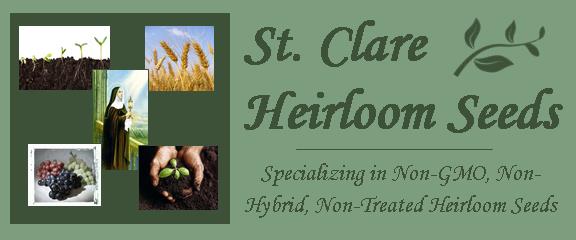
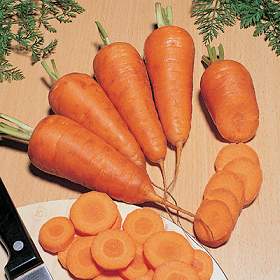









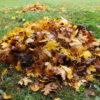
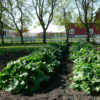

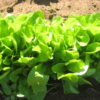
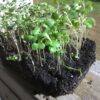

Marsha Sparks (verified owner) –
Saving for second planting in July
Donna M. (verified owner) –
Yum. These carrots are so juicy and sweet to eat raw or cook.
Anonymous (verified owner) –
Can’t wait to plant
Elizabeth K. (verified owner) –
Veggies the kids like, anything different is interesting!
Heather Glenn (verified owner) –
These people are great! Our order got lost and they immediately sent it again. We highly recommend getting your seeds from St. Clare Heirloom Seeds.
Melissa C. (verified owner) –
So happy with every carrot variety we’ve tried here. Seems to germinate so much better than even the other heirloom guys!
Leslie (verified owner) –
Always fast delivery and high quality seeds. The best.
Freda Maree Thomasson (verified owner) –
Never tried this type of carrot, can’t wait to taste them.
Mary Mabry (verified owner) –
Arrived in the mail promptly and will not disappoint when planted in a container. Loved the 50% discount!!
Sylvia M. (verified owner) –
Received the seeds very quickly
Anonymous (verified owner) –
Loved it!
Trudy Wang (verified owner) –
ditto
Hazel Hardisty (verified owner) –
great!
Diane G. (verified owner) –
5 star!